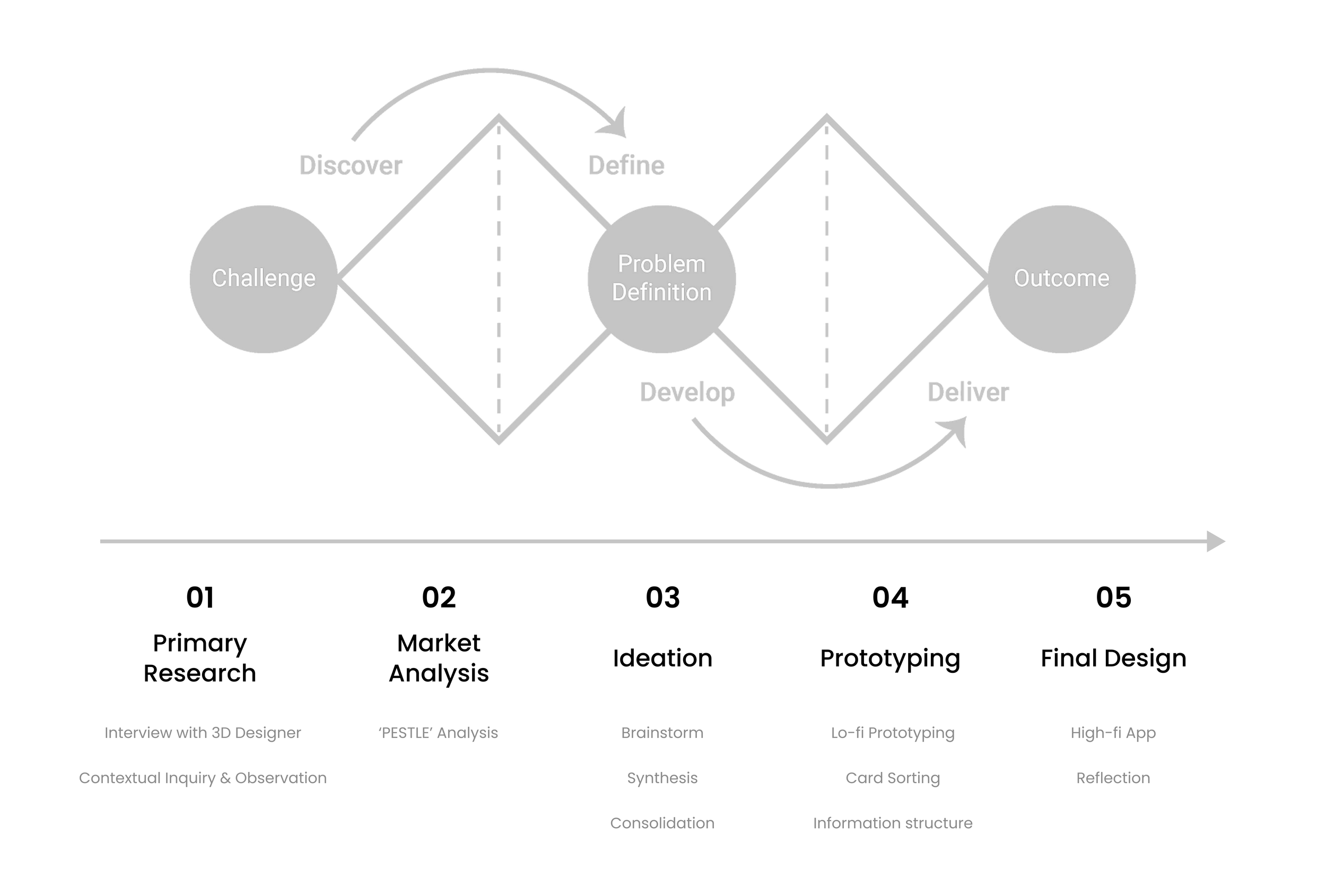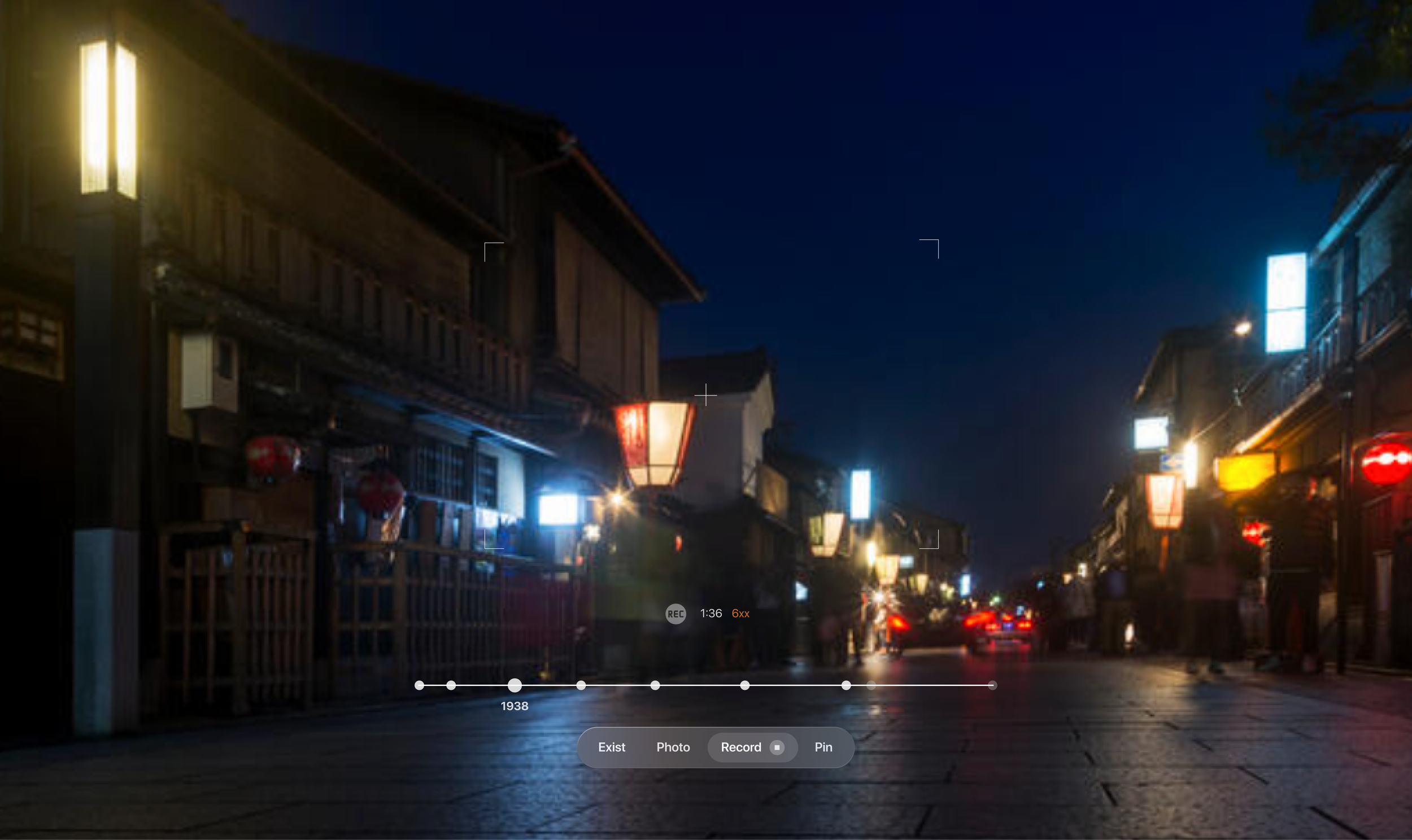Pinterest for Mixed Reality
UX + UI Design | Individual Work | Conceptual | 6 Weeks | Figma, Adobe PR, AE, PS, Generative AI, Blender, Spline
Pinterest's mission is to inspire and be a primary innovation platform for designers. Despite its vast resources and AI-driven image sorting, it has yet to fully address time constraints faced by 3D designers in the innovation phase. My Pinterest redesign aims to leverage Pinterest's AI image sorting and generation capabilities to enhance 3D inspiration collection and interaction, particularly on MR devices. This forward-looking design process envisions seamless integration of rapid inspiration gathering and modelling, enabling 3D designers to swiftly achieve their initial design inspirations.
This individual & experimental project demonstrates my passion for Virtual Reality and AIGC exploration in the future. I aim to collaborate with teammates with different skills and backgrounds. Together, we would deliver a comprehensive VR project, conducting tests and experiences on platforms such as Pico and Quest.
Project Overview
1.1/Talk to the Artist-Home Page
1.2/Talk to the Artist- Visit the Studio
1.3/Talk to the Artist-Recording & Notes
1.4/Talk to the Artist-History
2.1/Edit object & Remix Surrounding- Remix Image with the Physical World
2.2/Edit object & Remix Surrounding-Model Generation from Image
3.1/Walk into the image-Image information page
3.2/Walk into the Image- Image to VR Scenery
4.1/Time Machine - Exterior Index page
Motion Design Showcase
Problem Statement
Being an architecture student, I spent significant time and materials early in the design process to create 3D models, gaining inspiration and defining spatial relationships. In the innovation phase of 3D projects, quick production of multiple models is crucial. Unfortunately, existing innovation-sharing platforms mainly offer images and videos, limiting access to rapid 3D spatial inspiration and real-space alignment of ideas.
As a digital product and 3D designer, I developed a proposal focusing on the question:
How can we enhance the initial inspiration phase for 3D creative professionals on existing innovation platforms?
Research & Design Methodology
I engaged 15 3D background designers and artists as potential users in the discovery and design process. They have diverse professional backgrounds, ranging from architects and wedding designers to sculptors and prop designers. I gathered feedback and suggestions from potential users at every stage, from conducting user interviews and contextual Inquiry to organizing information through card sorting. This inclusive approach allowed me to quickly confirm and iterate on the MVP features during the ideation phase.
01. Interview Findings
Through interviews and observations with 15 3D artists, the following pain points emerged as the most common.
02. Market Analysis
Why is Pinterest the most suitable platform for entering the mixed reality market?
Based on market research and user interviews, I decided to redesign Pinterest to enhance innovation for 3D artists. The research revealed that 80% of 3D artists and designers use Pinterest to seek inspiration. They expressed a need for more diverse content formats and better integration with design tools. Pinterest's unique keyword classifications and stylistic preferences can be incorporated into a prompt database, making it the most suitable platform for AI-generated 2D-to-3D image creation.
03. Ideation
Once consumer values and product requirements were identified, the ideation process began in earnest. Initially, I brainstormed numerous ideas, maintaining the belief that every idea was valid at this stage. Even the most unconventional concepts could lead to genuine innovation. Subsequently, rapid prototypes allowed the team to obtain preliminary user feedback and further refine the concepts. After refinement, the concepts were evaluated against specific criteria to narrow down to a final concept. The feature preferred by users, delivering superior performance on VR and MR devices, aligns with the release of Apple Vision Pro on WWDC 23, suggesting significant potential for development on the VisionOS platform.
I . Brainstorming
The ideation process commenced by generating over 20 ideas focused on product requirements, encompassing features, potential technologies, mediums, and services. I explored concepts across a range of devices, such as computers, mobile apps, sleep trackers, and AR/MR devices.
II . Affinity Grouping
Then these ideas were grouped into categories based on their similarity with each other.
III . Rapid “Pretotyping”
The ideas under each category were synthesized, pulling valuable elements out of them and reconvene those elements to build prototypes being able to validate the potential of the ideas. Rapid prototypes were built using storyboards and wireframes by constantly reflecting on the values of the original ideas. The idea of a rapid prototype centers around getting as much feedback as possible with the least amount of effort. In this manner, I successively built 6 quick concepts.
IV . Synthesis
Based on feedback on the concept, I iterated and synthesized the first-round prototypes into 4 main concepts. Building these concepts allowed me to begin to evaluate them critically and understand the pros and cons of each idea.
V . Consolidation
Based on user feedback and reviews of the concepts, I decided to move forward with the feature “walk into the image“, “Edit & Remix Object“, “Talk to the Artist“ and “Time machine“.These functionalities are built upon promising AI generation technology and mixed reality devices.
04. Information Structure
I reviewed Pinterest's existing information structure and seamlessly integrated new VR features without disrupting the current mobile & desktop structure.
Scenario & Hi-fi Design
-Feature 1/ Walk into the Image-
-Feature 2/ Edit object & Remix with Surrounding-
-Feature 3/ Talk to the Artist-
-Feature 4/ Time Machine-
Design System (visionOS)
Reflection and Next Step
I've finalized the user interface and user flow at this stage. To make it compatible with VR devices for further user testing, I'm utilizing Blender for scene modelling and acquiring proficiency in Unity C# for basic interactivity.
Moving forward, My Passion is to partner with teammates with programming and scene design backgrounds during my graduate studies. Collectively, we aim to deliver a comprehensive VR project, conducting tests and experiences on platforms such as Pico and Quest.
-Thanks for Reading-




























